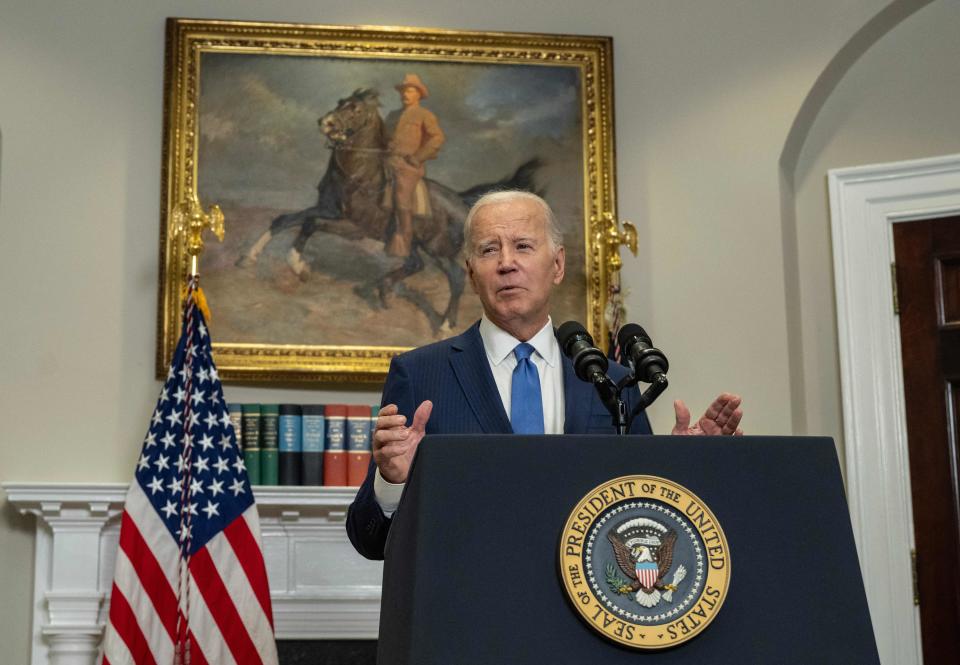Photo:
Monday’s announcement highlighted the significance of user privacy, government transparency, and public safety.
The Biden Administration has announced its comprehensive plans to address and regulate the development of artificial intelligence (AI). Through a new executive order (EO), the administration aims to enhance public protection and establish best practices for federal agencies and their contractors.
A senior administration official stated that President Biden had instructed his team to take extensive measures, and the executive order reflects this by leveraging the power of the federal government to manage the risks and benefits of AI. The order focuses on consumer and worker safeguards, promoting innovation and competition, and advancing American leadership in AI.
The implementation of these actions will occur over the next year, with initial safety and security changes taking place within 90 days. More complex reporting and data transparency schemes will require 9 to 12 months before full deployment. To ensure the timely execution of these actions, an “AI council” will be created, chaired by White House Deputy Chief of Staff Bruce Reed, who will meet with federal agency heads.
The executive order also highlights the voluntary commitments made by 15 major American technology companies to ensure the safety, security, and trustworthiness of AI technology before its release to the public. However, the administration emphasizes that voluntary commitments alone are insufficient.
The EO introduces new standards for AI safety and security, including reporting requirements for developers whose foundation models may impact national or economic security. It also mandates the disclosure of red team safety test results and the system’s training runs before making the model available to the public, aiming to prevent the release of potentially dangerous machine learning products.
Furthermore, the order encourages the Departments of Energy and Homeland Security to address AI threats to critical infrastructure and various risks related to national security. Agencies funding life-science projects will establish AI standards as a condition of federal funding. The EO also establishes a cybersecurity program to identify and address vulnerabilities in critical software infrastructure using AI tools.
The administration acknowledges the need for transparency in AI-generated content to combat deepfake trickery and disinformation. The Department of Commerce will work with industry advocacy groups to develop a watermarking system for federal agencies, ensuring that the public can easily verify the authenticity of content published on official channels.
The EO also emphasizes the protection of civil rights and the prevention of algorithmic discrimination. It requires guidance to be extended to landlords, federal benefits programs, and federal contractors to mitigate discrimination perpetuated by AI systems within their spheres of influence. The Department of Justice will develop best practices for investigating and prosecuting civil rights violations related to AI.
Additionally, the EO calls for the acceleration of privacy-preserving techniques in AI development and training. It highlights the need for cryptographic tools and collaboration with research networks and the National Science Foundation. The order reiterates the importance of bipartisan legislation to address privacy concerns associated with AI systems.
The healthcare sector will also see significant reforms, with the establishment of a safety program to address AI-based medical practices. The federal government will support educators in utilizing AI-based educational tools, such as personalized chatbot tutoring.
While recognizing the benefits of AI for business, the Biden administration acknowledges the potential threats to worker security, such as job displacement and intrusive workplace surveillance. The EO aims to develop principles and best practices to mitigate these harms and maximize the benefits of AI for workers. The Department of Labor and the Council of Economic Advisors will study the impact of AI on the labor market and explore ways to support workers facing labor disruption.
To attract AI talent, the administration will launch a federal jobs portal called AI.gov, offering information and guidance on fellowship programs with the federal government. The White House also plans to streamline visa criteria, interviews, and reviews to facilitate immigration for individuals seeking to work in advanced industries in the US.
Although the industry was not previewed on these policy changes, the administration has collaborated extensively with AI companies on these issues. The Senate recently held an AI Insight Forum, and Vice President Kamala Harris is scheduled to speak at the UK Summit on AI Safety.
However, Senate Majority Leader Charles Schumer has argued that the executive order alone is insufficient and emphasizes the need for legislative action.
Overall, the Biden Administration’s executive order on AI demonstrates the government’s commitment to addressing the risks and benefits of AI technology, protecting public interests, and promoting responsible development and deployment.
